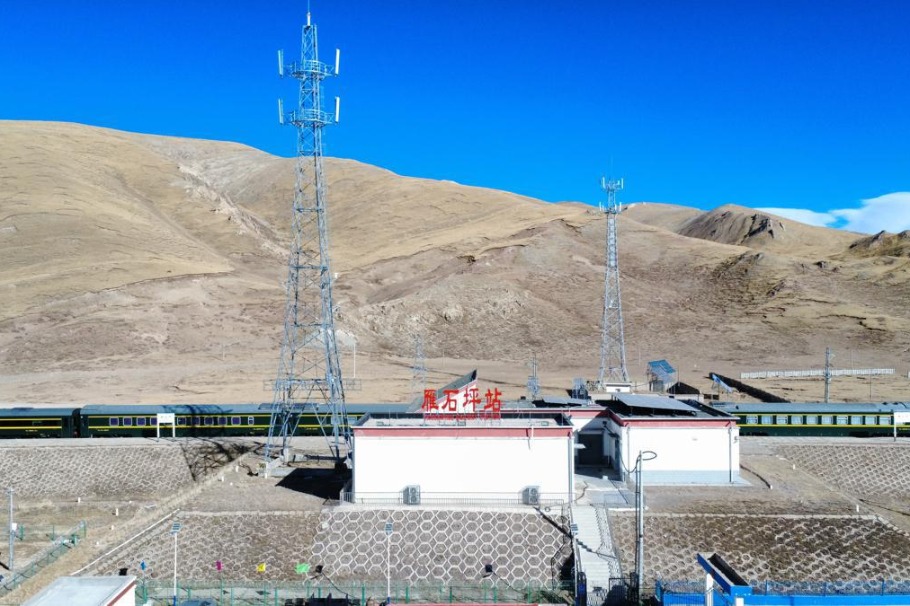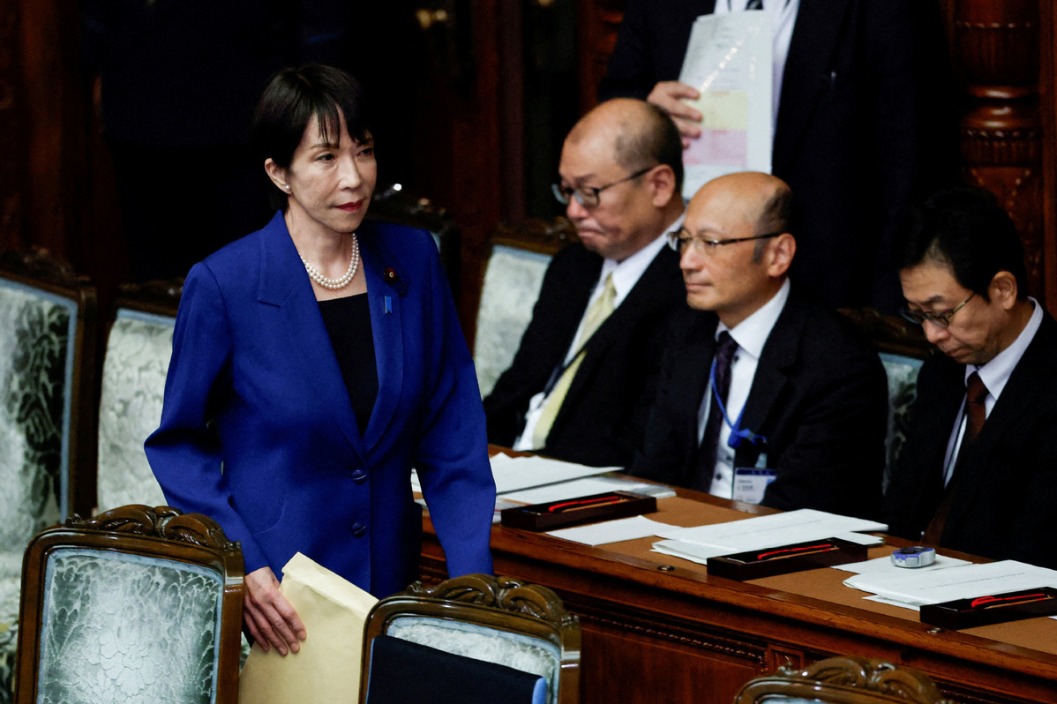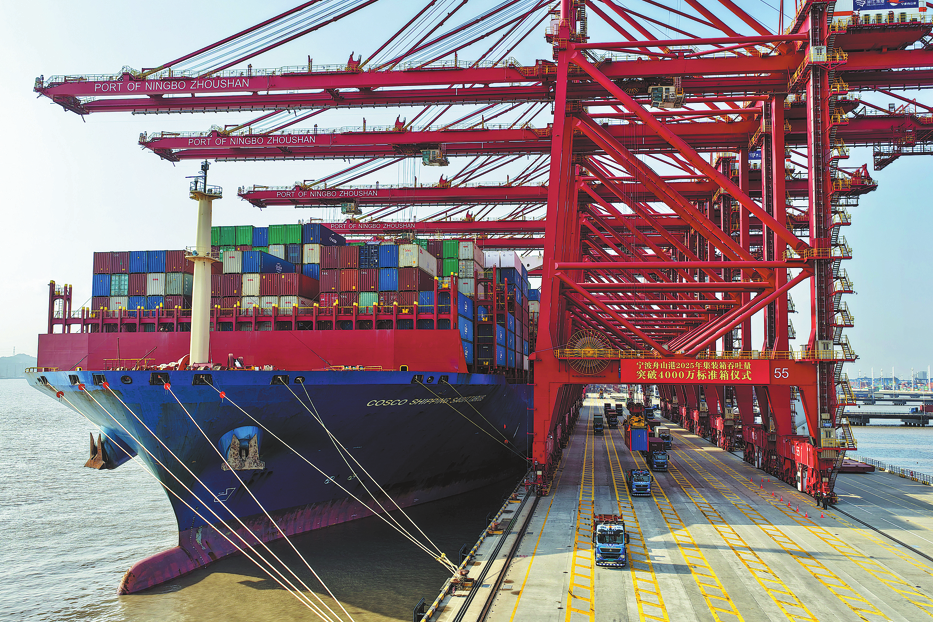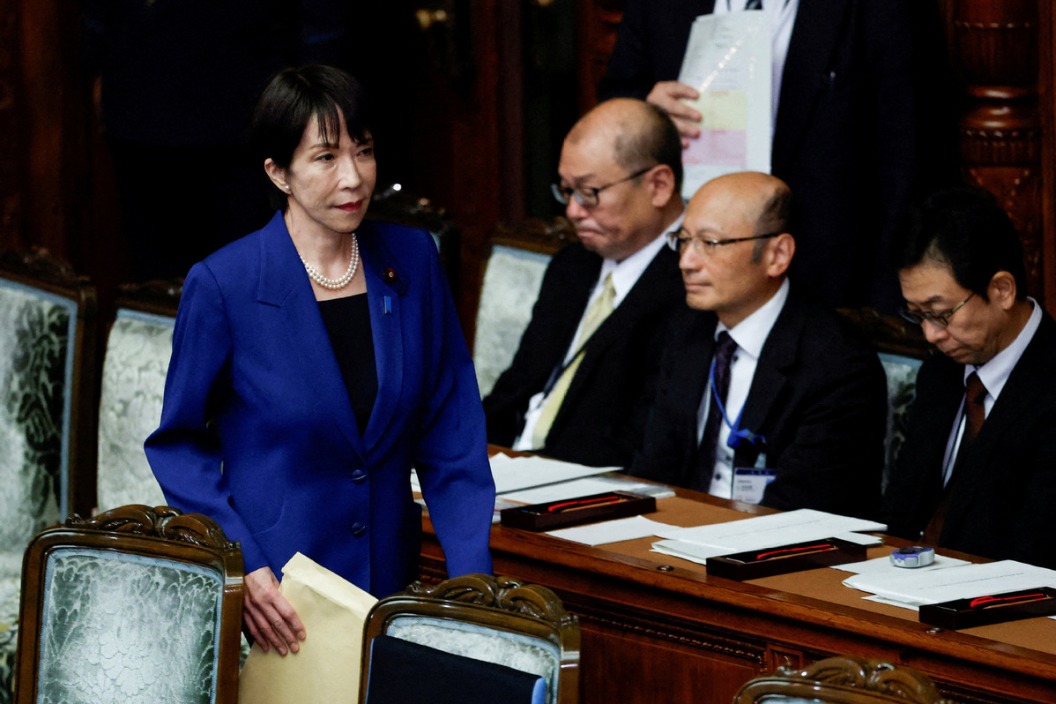Green power pilots new energy system


The report of the 20th National Congress of the Communist Party of China proposed to accelerate the planning and construction of a new energy system in order to facilitate the comprehensive implementation of the green development plan, which is key to ensuring the country's carbon emissions peak before 2030 and it achieves carbon neutrality before 2060.
China has introduced a"1+N policy" to implement the new energy plan in which the "Working Guidance for Carbon Dioxide Peaking and Carbon Neutrality in Full and Faithful Implementation of the New Development Philosophy" is the core. Jointly issued by the CPC Central Committee and the State Council, China's Cabinet, the working guidance spells out the action plans for various industries and fields such as energy, transportation, and urban and rural construction, which support "N".
In the"1+N policy,"1" stands for peaking carbon emissions before 2030 and realizing carbon neutrality before 2060, and "N" stands for the Action Plan for Carbon Dioxide Peaking before 2030 and relevant policies and measures for key areas and sectors including energy, industry, transportation sectors, and circular economy.
China has proposed to establish a green, low-carbon and circular economic system, as well as a low-carbon, safe and efficient energy system before 2060. This will ensure China's energy utilization efficiency reaches the international advanced level and the proportion of non-fossil energy consumption exceeds 80 percent, so as to realize carbon neutrality.
China needs to accelerate the planning and construction of a "new energy system" which adapts to and serves the green, low-carbon and circular economic system and thus helps establish a zero-carbon or near-zero-carbon economy before 2060.
The planning and construction must take into account the results of global and domestic energy transformations, as well as the latest innovations in energy technology and business models. And by continuously optimizing energy transformation, China can break new grounds and achieve its energy transformation goals, which will also be important for China's goal to become a great modern socialist country that is prosperous, strong, democratic, culturally advanced, harmonious, and beautiful.
The "new" aspect of the new energy system is that it is mainly based on clean energy. Before 2060, China's new energy system must be primarily based on sustainable and clean energy sources such as solar, wind, biomass and hydrogen, with the proportion of these clean energy sources exceeding 80 percent in the total energy mix.
As such, the planning and construction of the new energy system must involve large-scale utilization of clean energy sources, and requires the continuous replacement of traditional fossil energy sources with clean energy through relevant laws, regulations, policies and market-driven mechanisms.
The construction of the new energy system should be aimed at ensuring China's emissions peak before 2030 and it realizes carbon neutrality before 2060. Not to forget that the safe and stable operation of the energy system is key to achieving the country's modernization goals and ensuring the wellbeing of the Chinese people.
The transformation and development of the energy system must follow the principle of "establish first and then break". While building a new energy system, China should also accelerate the green and low-carbon transformation of its fossil fuel-based energy system which includes coal and coal-fired power generation, while ensuring stable socioeconomic development.
Coal remains the primary fossil fuel in China. To build a new energy system, China aims to gradually reduce coal consumption during the 15th Five-Year Plan (2026-30) period by implementing strict control measures. Efforts are also being made to shift to cleaner energy sources and higher-quality raw materials. Preliminary estimates show that in the industrial sector alone, coal consumption as raw material and for material conversion exceeds 100 million tons of standard coal annually.
Renewable energy and other forms of clean energy will become the backbone of China's energy system, and coal-fired power plants will gradually reduce their total operating hours in a year, with the majority of them being phased out in the long run. With the longest-lasting coal-fired power units likely to cease operation after 2055, coal-fired power will gradually yield space to flexible power generation sources such as wind and solar power.
The development of the new energy system will reshape and reinvigorate China's energy system, promote revolutionary changes in energy and related industries, open up China's energy sector to the world, improve connectivity, deepen cooperation with, and increase mutual benefits for, major economies in the fields of technology, products and supply chains.
During this process, China's energy imports, too, will reduce. For example, the demand for oil and coal in China has already peaked and will soon reach a plateau, which means their imports will continue to decline in the future. In 2022, for instance, China's oil and gas imports and dependence on foreign countries all decreased, along with the processing volume and crude oil consumption.
China's clean energy installed capacity, and the number of new energy vehicles and their inventories have increased significantly. As a result, the imports of mineral resources, equipment and technologies required for the new energy industries and technologies such as wind and solar power, hydrogen energy and energy storage will also increase.
To build a new energy system, China is also developing a new power-generation system primarily based on renewable energy. Thanks to the advancement made in high-tech, solar and wind power generation has already become the most competitive source of electricity.
Given its greener and smarter development direction, the new energy system will also become more efficient and resilient. While the traditional power grid will serve as the foundation for the new energy system, information technology platforms and intelligent control will help build it into a safe, efficient, flexible, intelligent, open and interactive system.
And with wind and solar energy plants generating large amounts of electricity, the power system's operational stability and economic feasibility will be ensured.
The author is a senior counselor and researcher at the Institute of Energy Research, Academy of Macroeconomic Research. The views don't necessarily represent those of China Daily.
If you have a specific expertise, or would like to share your thought about our stories, then send us your writings at opinion@chinadaily.com.cn, and comment@chinadaily.com.cn.


































